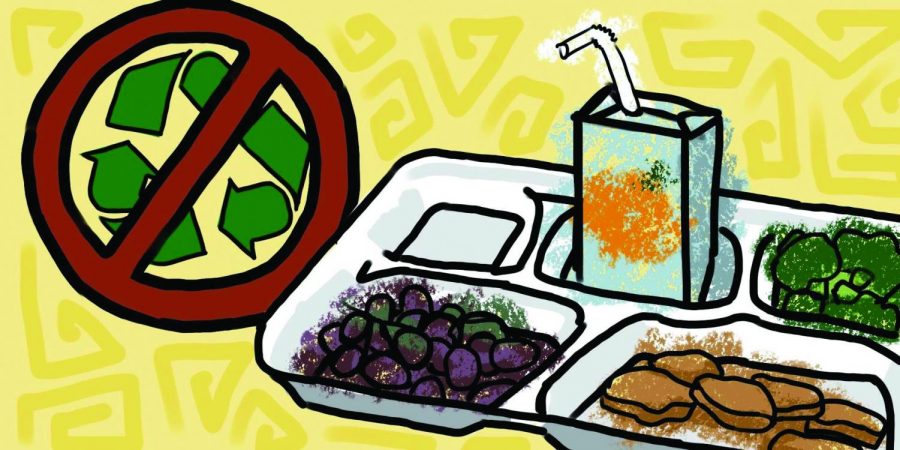Styrofoam trays pose harmful threat to environment, should be eliminated from school lunchrooms nationwide
Styrofoam trays — they’re a lunchtime-staple in the Blue Valley cafeteria and in cafeterias across the country. Praised for its lightweight composition, cheap price and heat insulating quality, styrofoam has established prevalent use in school lunchrooms.
However, such ubiquitousness has caused students and school administrators to turn a blind eye to the dangerous effects styrofoam evokes once thrown away.
Despite many styrofoam products sporting the recycling symbol, The Department of Sanitation concluded that styrofoam cannot be recycled. Since much of the styrofoam used is contaminated with food or drink, it is therefore not accepted at drop-off sites and many recycling programs.
Styrofoam and styrofoam products are then placed in landfills where, according to LiveStrong.com, they make up 30 percent of its contents.
But the journey doesn’t end there.
Being 95 percent air, the lightweight styrofoam is easily carried away by wind and often ends up littering streets and beaches, clogging storm pipes and harming animals. Styrofoam buoyancy allows it to float down waterways, eventually making it to the ocean where it gets broken down into smaller pieces and is fatally mistaken as food and is ingested by marine life.
In addition to environmental dangers, styrofoam also poses harm to human health.
Styrofoam is made using the monomer Styrene, a carcinogen and neurotoxin. When heated or in contact with acidic foods and beverages, Styrene leaks from the styrofoam and contaminates the items. Contamination of Styrene into the human body is also possible through simple physical contact with any products containing the neurotoxin.
According to Clean Water Action, human exposure to Styrene can cause lasting effects, such as hindering balance and spatial orientation, hearing problems, concentration problems and decreased color discrimination.
Styrofoam causes harmful dispositions to humans and the surrounding environment, so why is it so accessible to students and the public?
The Blue Valley School District and every district nationwide should seek to replace styrofoam trays with more eco-friendly alternatives like compostable plates.
Some districts have already taken steps; In 2013, New York City legislation announced its directive to eliminate the 860,000 styrofoam trays used daily in its school systems.
This policy provoked additional school districts to follow suit — the Philadelphia public schools, which by switching to compostable tableware ceased the disposal of their monthly-used 880,000 styrofoam trays, plates and bowls.
Annually, both cities collectively eliminate over half a billion toxic and polluting styrene foam trays from entering the environment.
By incorporating a similar policy, Blue Valley could make a significant difference in the way styrofoam affects the local and global ecosystems.
Schools are supposed to provide a setting of safety and active learning for students that will teach them to be improving members of society — let’s not allow school lunch trays to jeopardize that agenda.

McKenna Cole is a senior and the Managing Editor for “The Tiger Print.” In her free time she enjoys hammocking, drag queens, guacamole, serving the...




